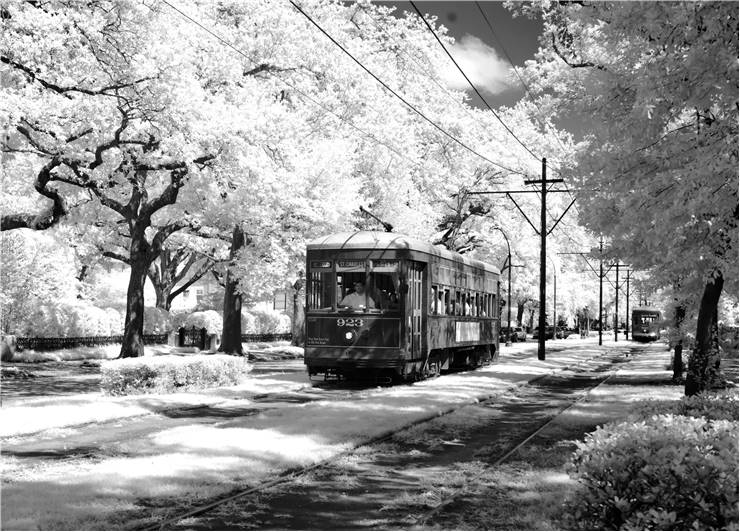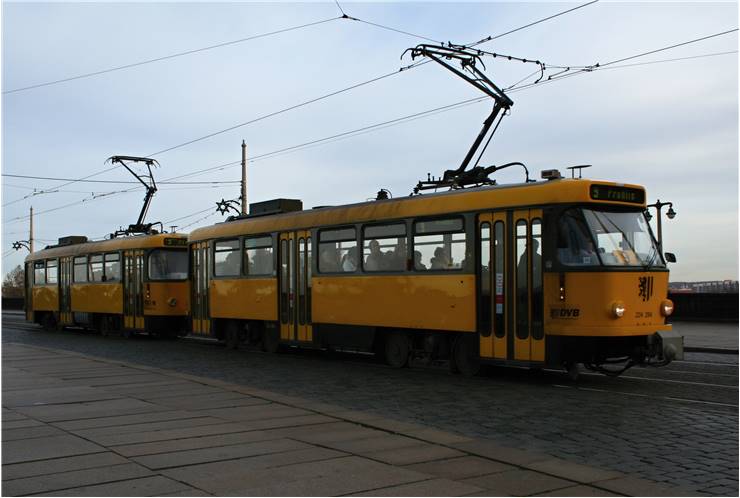Tram - History and Different Types of Trams
Trams are railway-based transportation vehicles that originally evolved from regular train networks into urban-based passenger transportation services when those railway lines became too embedded inside cities, making them unsuitable for transport of large steam, electric or diesel-powered trains. Modern trams (also known under names tramcars, streetcars, trolleys or trolley cars) are usually traveling on ground level alongside regular car tracks, but with clear segregation so that cars, foot and bike traffic is not using parts of the road where tramway is laid (except on crossings).
Today, over 380 cities around the world have purpose-built their tram systems that transport passengers in regular intervals and fixed city lines, enabling the much larger flow of population across large distances without impacting the flow of regular car transport. Many cities have elected to adopt tramways because they are much cheaper to build than digging entire underground subway network, and they can be added into already developed cities without the need of major overhauling of streets. Modern tramways are operated by electricity (via suspended overhead cable network, or recently via ground delivery), and they are usually built to be light and usually between one to five passenger carriages. Larger models can be found, especially in areas where city trams are also working on inter-city relations. In addition to working on tram tracks, some can operate on traditional railway tracks or even magnetic tracks.

History of trams began in first years of 19th century in South Wales, UK, where a small part of Swansea and Mumbles Railway located in urban areas was reconfigured to be used for trams. That very first model of the tram does not have many similarities with modern trams. It consisted of a railway car that was made from wheels and a single platform that featured no walls or seating positions. This simple platform was pulled by a team of two horses on a regular route where anyone could use them without the need to pre-hire the transport. This design from the UK quickly has spread across the world and the urban areas where old railroad networks could be re-purposed for passenger use. Some of the first tram networks were in appeared in the United States (New York in 1832, New Orleans in 1835), France (1839), Chile (Santiago, 1858), Egypt (Alexandria, 1850), Australia (Sydney, 1860) and Indonesia (Jakarta, 1869). In late 1800s trams became powered by small steam locomotives (although Paris trams used larger steam engines that were located below passenger carriage). They became very popular not only in Europe, North America in Asia but received complaints because of their smoke, noise and relatively low power that prevented them from pulling larger sets of carriages.
While the majority of early tram networks were built in cities that were placed in level areas, some cities faced issues of extreme elevation, which caused them to adopt cable-operated tram lines. The first and most famous example of this drive system comes from San Francisco which introduced its cable-operated tram lines in 1873. Other cities that faced similar elevation problems quickly adopted this system (Dunedin in New Zealand in 1881, Melbourne in 1885, New York City, Los Angeles, Chicago, Dresden, London, and others. Even though cable-operated trams are effective, their integration, upkeep, and accident prevention mechanism costs are considerate.
1880 saw the appearance of the first fully electric tram. This marvel was created in Saint Petersburg, Russia by inventor Fyodor Pirotsky. The basic operation principle of that first electric tram remains in use today – gathering of electricity from overhand cable network via pantograph or trolley pole (all attempts of building trams with built-in batteries failed). Just a year later in 1881, the first regular electric tram line was opened in Lichterfelde, then a suburb of Berlin. After that successful experiment and integration of electric trams in several other European cities, electric trams became a commonplace all around the world. However even though electric trams won the popularity battle, other power sources were also examined and used. This includes gas-powered trams that started being implemented in several cities between 1886 and 1908. Other power sources for trams can be petrol, compressed air, diesel motors and hydrogen cells. Some cities choose to implement those alternative power sources because of the higher costs of maintaining a strong electric network in specific areas (for example in hurricane-prone territories, rail networks with stronger elevations and more).
Types of Trams
Types of trams by their design:
- Single-ended – Tram that has operator position at just one end of the tram.
- Double-ended – Tram with two operating positions, one on each side of the tram. This approach makes tram more versatile (it does not need to run only in circular tracks), but it also increases its complexity and weight.
- Low floor – Modern design of trams that allow passengers to more easily and quickly enter or exit the tram. Disabled users with wheelchairs can much more easily use these trams because only a small platform is needed to serve them.
- Ultra low floor – Recent technical improvement in which most of the motor systems are located in the roof, leaving the floor area very close to the ground. Because these trams have entry height of just 18cm (similar as sidewalk height), they can be very easily used by users with wheelchairs or baby carriages. On the other hand, their integration into city lines is more difficult because this tram type demands unique floor.
- Articulated – Trams that have articulated joints and a walking platform that connects adjoining passenger carriages. They are very popular all around the world, with some trams having up to 5 or six passenger compartments that are connected this way.
- Double Decker – Trams with 2nd floor. They are mostly used in Great Britain, Australia, Hong Kong and Alexandria.
- Tram-train – Trams that fulfill all technical requirements (power, wheel type, safety, etc.) that can operate on both city tram lines and regular gauge railway tracks. They are mostly used on longer lines that connect more than one urban area separated by a regular railway track.

Interesting Facts about Trams
- Early horse-driven trams were also sometimes powered by oxen, and in cases of emergency, by human workers.
- First electric tram in England was opened in 1885 in Blackpool.
- There are more than 200 European cities who have active tram lines.
- More than 36,000 trams and light rail vehicles are currently in operation all around the world.
- The largest fleet of trams is in a city of Prague (920). Other large fleets are located in cities such as Moscow, St. Petersburg, Budapest, and Warsaw.
- Trams are using almost 16,000 kilometers of light railway tracks.
- First trams in the United States were adapted from stagecoaches.
- First tram line in the US operated along Bowery and Fourth Avenue in New York City in 1832.
- The longest single tram line in the world is Belgian Coast Tram (68 km), which runs along entire Belgian sea coast.
- The largest tram track network is in Melbourne (256 km). Others large networks are in St. Petersburg, Cologne, Berlin, Moscow, Budapest and Vienna.

